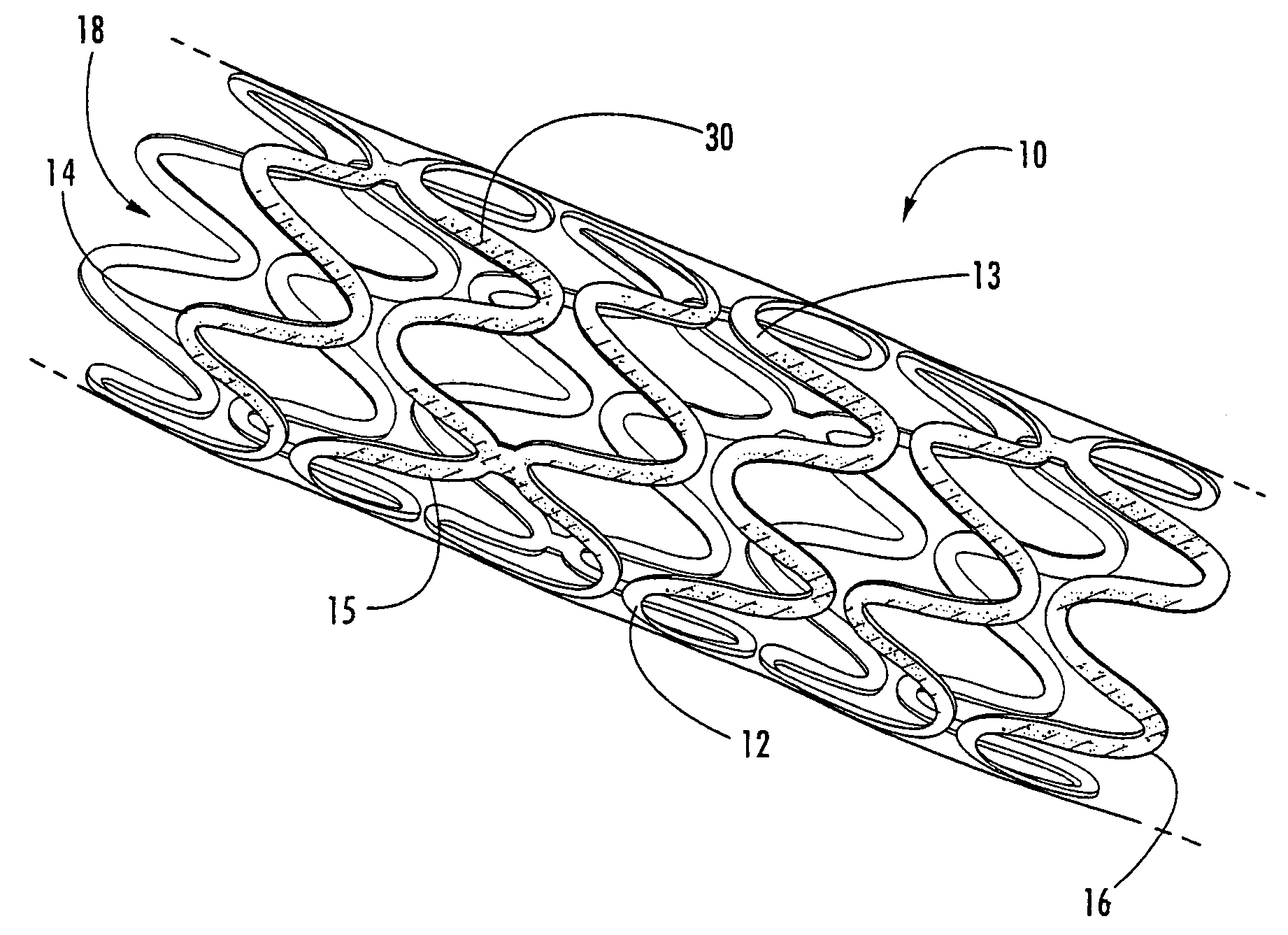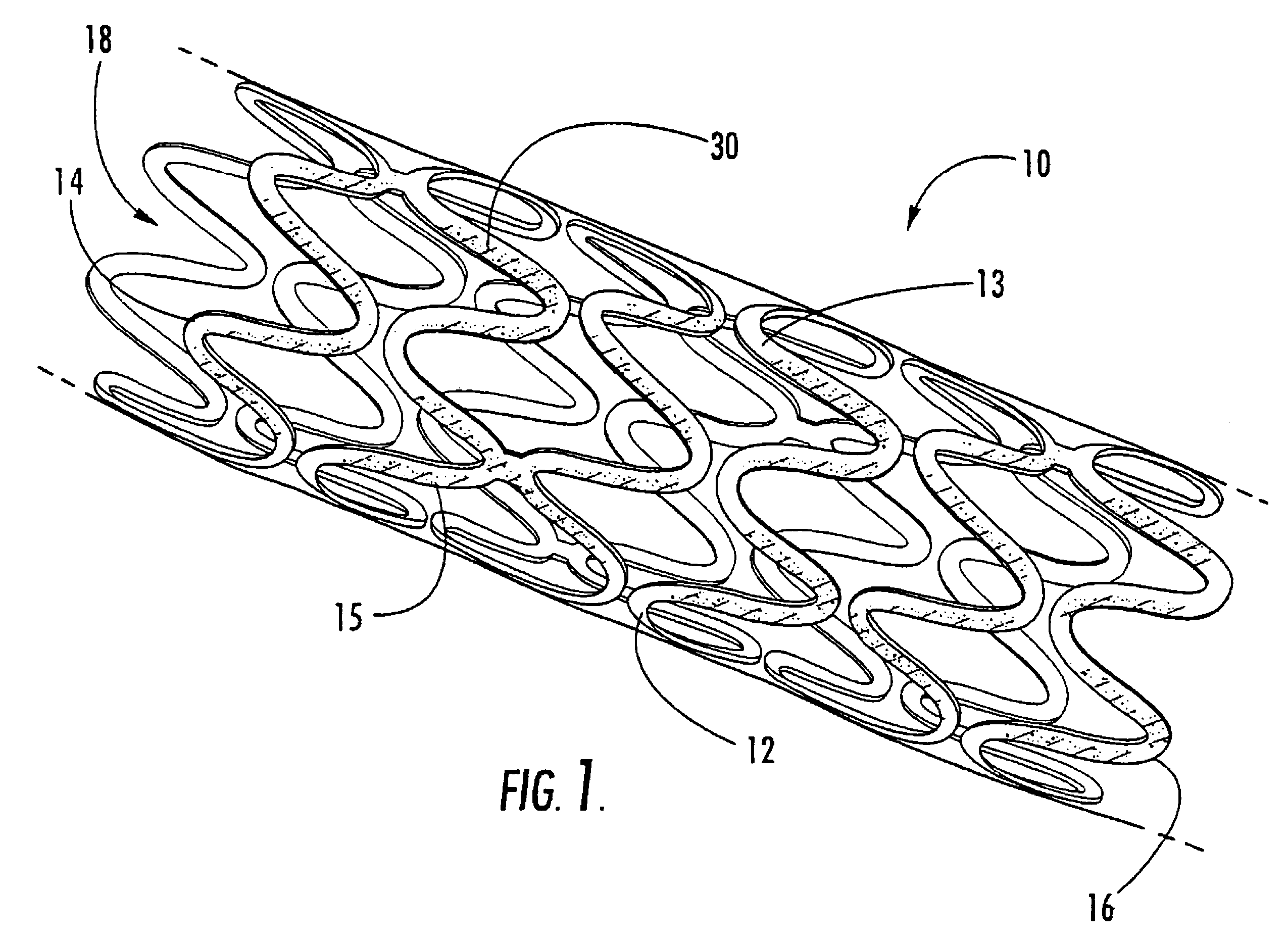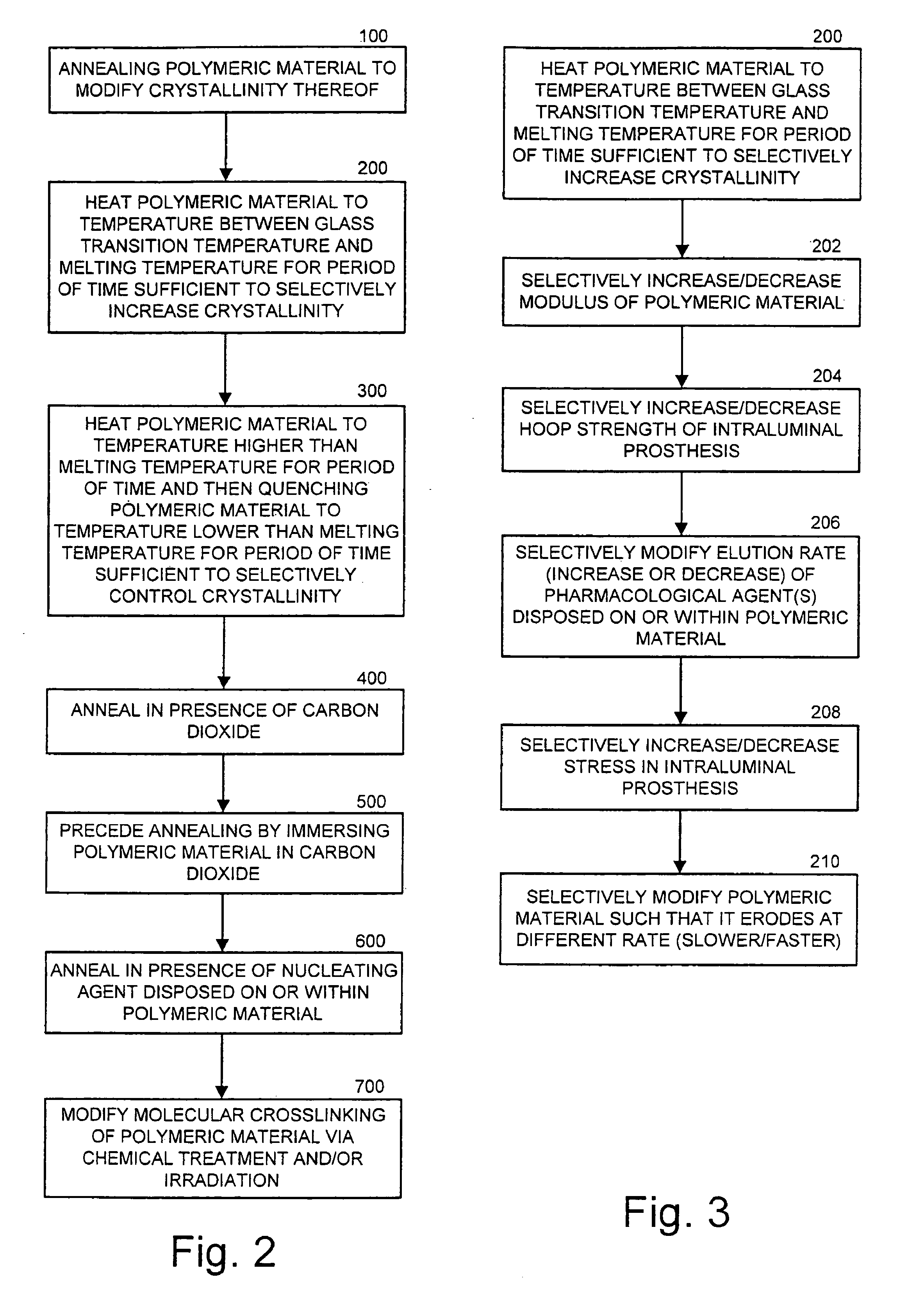Intraluminal prostheses having polymeric material with selectively modified crystallinity and methods of making same
a polymeric material and crystallinity technology, applied in the field of medical devices, can solve the problems of inability to carry and release pharmacological agents, methods that have failed to provide a quick, easy and inexpensive way of loading drugs onto intraluminal prostheses, and small amounts of drugs can be loaded into thin polymeric coatings. , to achieve the effect of increasing the modulus of polymeric materials, reducing stress in intraluminal prostheses, and increasing the hoop strength
- Summary
- Abstract
- Description
- Claims
- Application Information
AI Technical Summary
Benefits of technology
Problems solved by technology
Method used
Image
Examples
Embodiment Construction
[0021]The present invention now is described more fully hereinafter with reference to the accompanying drawings, in which embodiments of the invention are shown. This invention may, however, be embodied in many different forms and should not be construed as limited to the embodiments set forth herein; rather, these embodiments are provided so that this disclosure will be thorough and complete, and will fully convey the scope of the invention to those skilled in the art.
[0022]The term “eluting” is used herein to mean the release of a pharmacological agent from a polymeric material. Eluting may also refer to the release of a material from a substrate via diffusional mechanisms or by release from a polymeric material / substrate as a result of the breakdown or erosion of the material / substrate.
[0023]The term “erodible” as used herein refers to the ability of a material to maintain its structural integrity for a desired period of time, and thereafter gradually undergo any of numerous proc...
PUM
 Login to View More
Login to View More Abstract
Description
Claims
Application Information
 Login to View More
Login to View More - R&D
- Intellectual Property
- Life Sciences
- Materials
- Tech Scout
- Unparalleled Data Quality
- Higher Quality Content
- 60% Fewer Hallucinations
Browse by: Latest US Patents, China's latest patents, Technical Efficacy Thesaurus, Application Domain, Technology Topic, Popular Technical Reports.
© 2025 PatSnap. All rights reserved.Legal|Privacy policy|Modern Slavery Act Transparency Statement|Sitemap|About US| Contact US: help@patsnap.com



